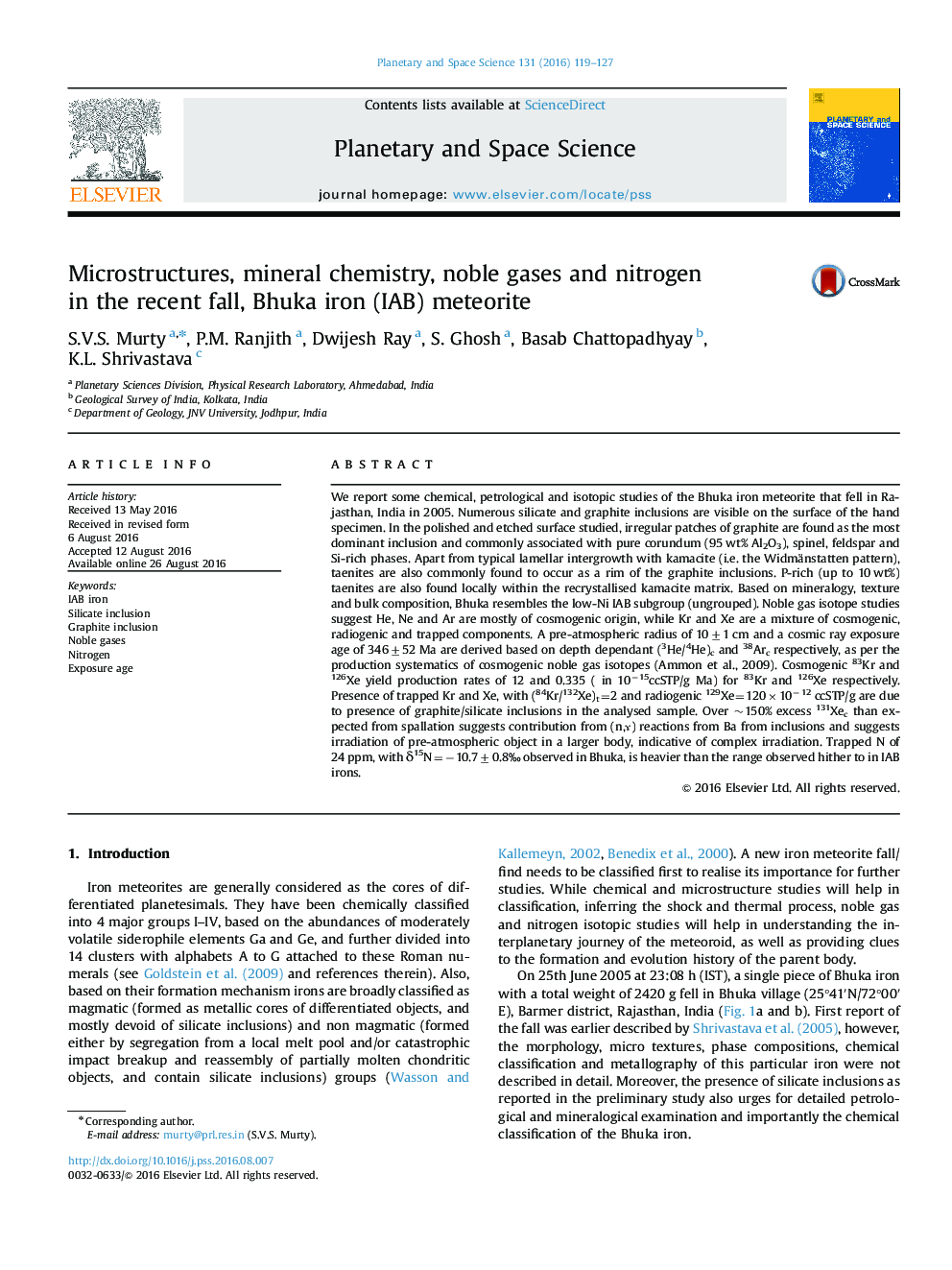| کد مقاله | کد نشریه | سال انتشار | مقاله انگلیسی | نسخه تمام متن |
|---|---|---|---|---|
| 5488108 | 1523909 | 2016 | 9 صفحه PDF | دانلود رایگان |
عنوان انگلیسی مقاله ISI
Microstructures, mineral chemistry, noble gases and nitrogen in the recent fall, Bhuka iron (IAB) meteorite
دانلود مقاله + سفارش ترجمه
دانلود مقاله ISI انگلیسی
رایگان برای ایرانیان
موضوعات مرتبط
مهندسی و علوم پایه
علوم زمین و سیارات
فیزیک زمین (ژئو فیزیک)
پیش نمایش صفحه اول مقاله

چکیده انگلیسی
We report some chemical, petrological and isotopic studies of the Bhuka iron meteorite that fell in Rajasthan, India in 2005. Numerous silicate and graphite inclusions are visible on the surface of the hand specimen. In the polished and etched surface studied, irregular patches of graphite are found as the most dominant inclusion and commonly associated with pure corundum (95 wt% Al2O3), spinel, feldspar and Si-rich phases. Apart from typical lamellar intergrowth with kamacite (i.e. the Widmänstatten pattern), taenites are also commonly found to occur as a rim of the graphite inclusions. P-rich (up to 10 wt%) taenites are also found locally within the recrystallised kamacite matrix. Based on mineralogy, texture and bulk composition, Bhuka resembles the low-Ni IAB subgroup (ungrouped). Noble gas isotope studies suggest He, Ne and Ar are mostly of cosmogenic origin, while Kr and Xe are a mixture of cosmogenic, radiogenic and trapped components. A pre-atmospheric radius of 10±1 cm and a cosmic ray exposure age of 346±52 Ma are derived based on depth dependant (3He/4He)c and 38Arc respectively, as per the production systematics of cosmogenic noble gas isotopes (Ammon et al., 2009). Cosmogenic 83Kr and 126Xe yield production rates of 12 and 0.335 ( in 10â15ccSTP/g Ma) for 83Kr and 126Xe respectively. Presence of trapped Kr and Xe, with (84Kr/132Xe)t=2 and radiogenic 129Xe=120Ã10â12 ccSTP/g are due to presence of graphite/silicate inclusions in the analysed sample. Over ~150% excess 131Xec than expected from spallation suggests contribution from (n,ɤ) reactions from Ba from inclusions and suggests irradiation of pre-atmospheric object in a larger body, indicative of complex irradiation. Trapped N of 24 ppm, with δ15N=â10.7±0.8â° observed in Bhuka, is heavier than the range observed hither to in IAB irons.
ناشر
Database: Elsevier - ScienceDirect (ساینس دایرکت)
Journal: Planetary and Space Science - Volume 131, 15 October 2016, Pages 119-127
Journal: Planetary and Space Science - Volume 131, 15 October 2016, Pages 119-127
نویسندگان
S.V.S. Murty, P.M. Ranjith, Dwijesh Ray, S. Ghosh, Basab Chattopadhyay, K.L. Shrivastava,